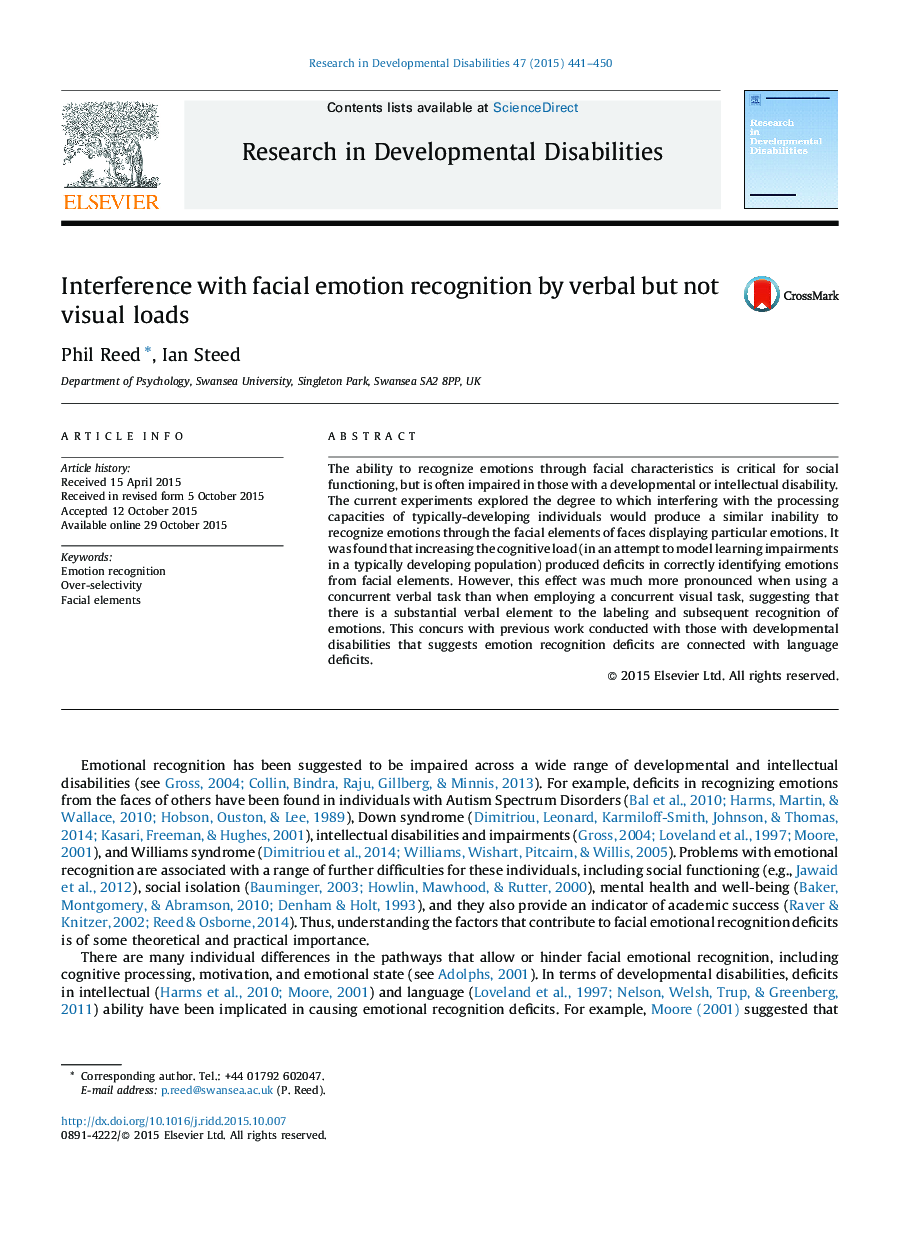| کد مقاله | کد نشریه | سال انتشار | مقاله انگلیسی | نسخه تمام متن |
|---|---|---|---|---|
| 371150 | 621898 | 2015 | 10 صفحه PDF | دانلود رایگان |
• The ability to recognize emotions through facial characteristics is critical for social functioning.
• Experiments explored effects of cognitive loads on facial emotional recognition.
• Increasing cognitive load produced deficits in correctly identifying emotions from facial elements.
• This effect was much more pronounced when using a verbal than a visual task.
• There may be a substantial verbal element to the labelling and subsequent recognition of emotions.
The ability to recognize emotions through facial characteristics is critical for social functioning, but is often impaired in those with a developmental or intellectual disability. The current experiments explored the degree to which interfering with the processing capacities of typically-developing individuals would produce a similar inability to recognize emotions through the facial elements of faces displaying particular emotions. It was found that increasing the cognitive load (in an attempt to model learning impairments in a typically developing population) produced deficits in correctly identifying emotions from facial elements. However, this effect was much more pronounced when using a concurrent verbal task than when employing a concurrent visual task, suggesting that there is a substantial verbal element to the labeling and subsequent recognition of emotions. This concurs with previous work conducted with those with developmental disabilities that suggests emotion recognition deficits are connected with language deficits.
Journal: Research in Developmental Disabilities - Volume 47, December 2015, Pages 441–450
